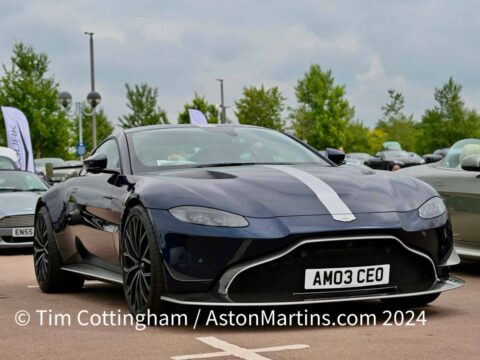DB2
- 25/01/2013DB2/4
- 25/01/2013DB2/4 Mark II
- 25/01/2013DB Mark III
- 25/01/2013DP114/2
- 25/01/2013Lagonda 2.6 & 3 Litre
- 13/05/2014DB4 to AM Vantage
- 16/08/2012David Brown so wanted a Lagonda saloon in the range but production of the DB4 based Rapide was spasmodic and to special order only, as the factory was geared up to DB4 production. The Lagonda marque became dormant again in 1964 after production of the Rapide ceased.
In 1963, the DB4 Vantage evolved to become the 4 litre DB5, made famous by 007 James Bond himself in the films Goldfinger and Thunderball. The specially adapted Dubonnet DB5 prototype was repainted Silver Birch and became the most famous and desirable car in the world. There was no way the factory could keep up with the phenomenal demand fuelled by the films. Even today, 007 and Aston Martin are inseparable. Demand for DB5’s is still far in excess of the other similar models and prices reflect this. Everyone still wants to be James Bond in a silver DB5 with black interior. But for those who’s pockets couldn’t stretch to the real thing, the Corgi scale model of the 007 James Bond DB5 has become the most popular diecast toy car of all time. A Silver Birch DB5 has now appeared in seven Bond films including the recent, Skyfall and No Time to Die.
The Kamm tailed DB6 was introduced in 1965 with better rear seat accommodation in an effort to increase sales to those in need of a full 4 seater. But shortly after and with an economic slowdown, demand slumped and many unsold cars awaited owners, stockpiled at the factory. The DB6 was for a while, a popular first Aston Martin, although prices have hardened recently and they are now much more expensive than an AMV8. An improved Mark 2 version of the DB6 was introduced late in 1969, although production only lasted for a little over a year.
In 1965, the DB5 convertible was updated and became the Volante; exceptionally stylish, open top motoring for the select few. From the production run of the DB4/5/6, convertibles only made up around one in every ten cars built. Consequently, values of these cars far exceeds those of the closed cars.
A larger, proper four seater car, the DBS, was first shown in 1967. Although it was intended to carry the V8 engine, it wasn’t ready in time so car was released with the familiar six cylinder unit. But with increased weight, headline performance suffered against the DB6. The restyled nose of the 1972 AMV8 was also applied to the 6 cylinder DBS when it became known as the AM Vantage. Due to the belief that safety legislation would prohibit open top cars, neither the DBS or AM Vantage were available from the factory as a convertible although some after market conversions were made.
Production of the Tadak Marek 6 cylinder cars lasted for 15 years and eventually ended in 1973. The ‘DB’ line lay dormant until 1994 when the DB7 appeared, the spiritual successor to the DB4.
The DB4, 5 and 6 were, and still are for many, the quintessential Aston Martin – rarer, faster and more beautiful than the Jaguar E-type – and chosen by the most discerning secret agent. Demand for all of the models has increased greatly in the last few years lead by the Zagato, DB4GT and DB5. As values have grown rapidly, making them unobtainable to all but the comfortably wealthy off, keen enthusiasts are quickly focusing on the previously unloved DBS and AM Vantage as an affordable entry-level six cylinder DB.















